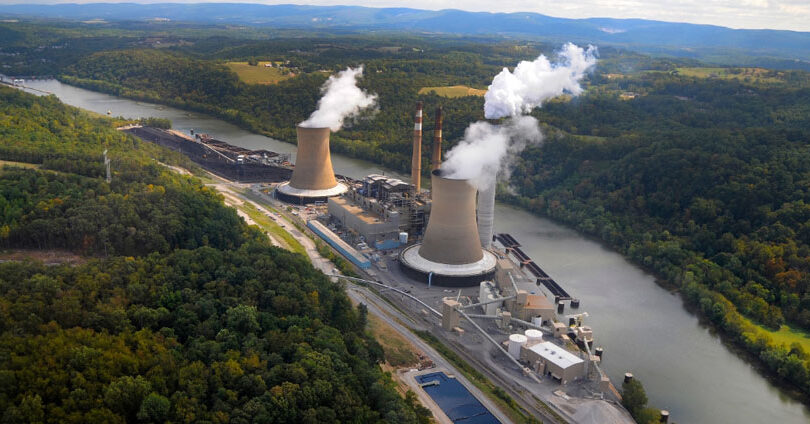MORGANTOWN – A coalition of consumer- and energy-advocacy groups has expressed disappointment with the report issued by a task force appointed by the Public Service Commission to investigate how increased coal usage at West Virginia’s power plants could save ratepayers money.
“Unfortunately, the task force turned out to be a missed opportunity, with well-proven strategies, such as competitive resource procurement processes and increased investment in energy efficiency, dismissed,” the coalition said in comments submitted to the PSC last week.
“At the same time,” the group wrote, “steps that would simply double-down on the state’s overreliance on a single fuel, such as longer term and Locational Marginal Pricing [explained below] coal contracts and increased operation of coal plants, advanced with little to no support or analysis suggesting that they would somehow reduce energy costs.”
The idea of the task force originated in March 2022, when the West Virginia Coal Association wrote to the PSC saying, “traditional coal supply contracting terms offered by the state’s utilities were insufficient to allow producers to supply the coal necessary to operate the power plants to the maximum benefit of state ratepayers.”
WVCA followed up with an April 2022 letter to the PSC requesting the task force, noting that the PSC recognized the value of the coal-fired plants in its directive to the state’s four power companies – Mon Power, Potomac Edison, Appalachian Power and Wheeling Power – to operate their coal-fired plants at 69% capacity.
When the plants don’t operate, WVCA said, West Virginians pay more for power purchased off the wholesale market (as much as 450% more during peak demand), and they lose the benefit of “off system” sales to the PJM regional market.
In June 2022, the PSC authorized the task force, which ultimately included these members: WVCA; the four power companies; the PSC’s Consumer Advocate Division; PSC staff; Longview Power; West Virginia Energy Users Group (industrial customers using high amounts of power); and West Virginians for Energy Freedom, which included West Virginia Citizen Action Group, Solar United Neighbors and Energy Efficient West Virginia; Sierra Club; and the WVU Center for Energy and Sustainable Development.
The task force began meeting in August 2022 and issued its final report Aug. 14 this year.
The report listed several conclusions. One, some of the concerns expressed by WVCA were addressed through subsequent PSC orders to the power companies and improved coal market conditions.
Two, the prospect of longer-term coal supply contracts is something the power companies is considering.
Three, the coal market is experiencing some volatility from factors – such as supply chain disruptions – that previously would have been insignificant. “This is likely related to the unusual situation caused by the war in Ukraine and the current state of the European energy market, as well as the lingering effects from the COVID-19 pandemic.” All of that makes predicting prices more difficult.
And fifth, PJM is facing new challenges as the mix of power resources evolves and includes more renewables.
All of these factors lead to some hedging.
“Perhaps the one thing that all Task Force members agreed on is that the energy market and fuel market are both changing in ways that have not traditionally occurred. All of these issues will ultimately have an effect on West Virginia ratepayers. What is beneficial in the short-term may not be benefcial in the long-term.”
All of this, the report said, “make it difficult to point to any one thing that can reduce the costs paid by West Virginia ratepayers.”
Citing all the positive changes since April 2002, plus new federal and PJM rules, “the Task Force is hopeful that the combination of these events will ultimately create a clearer path toward what needs to be done to reverse the rising costs to West Virginia electric utility ratepayers.”
Consumer groups’ response
WVCAG, Solar United Neighbors and Energy Efficient West Virginia pooled their thoughts in their response filed last week.
One, they say, is that reliance on a single fuel source, coal, is exacerbating affordability concerns in the state. From 2005-22, electricity rates have climbed 113%, more than any other state. That’s driven largely by the reliance on coal, they say. West Virginia’s power supply is 90% coal, while the next three states are all below 75% and the national average is below 20%.
Two, the task force overlooked two important recommendations they say. One is competitive resource procurement. This means power companies soliciting all-source bids to obtain competitive market prices. There is no proof that longer-term contracts and LMP [a way for wholesale electric energy prices to reflect the value of electric energy at different locations, according to ISO New England, that region’s power grid] reduce costs.
“It is highly unlikely that further locking utilities into a costly fuel source for years to come would be economically beneficial for ratepayers.” Renewables are getting cheaper, natural gas prices have fallen to pre-2022 levels and energy prices overall have declined since then.
Also, as evidenced in recent supply issues, having a coal contract doesn’t guarantee the coal will be delivered, they say.
The other recommendation, the coalition wrote, is investing in energy efficiency. They site a report discussed during the meetings: “Energy efficiency is a low-risk, low-cost energy resource that provides direct savings to consumers, encourages investment across other sectors of the economy, displaces the need for costly investments in new energy supply infrastructure, creates new employment opportunities, and reduces emissions of greenhouse gases and other harmful pollutants.”
Based on that report, the coalition told the PSC: “Now is the time for West Virginia to expand its energy efficiency investments thanks to the availability of an estimated $140 million in federal funding for energy efficiency programming in the state. This funding, however, is largely a one-time opportunity, so it is imperative that the Commission and utilities develop and implement programs to maximize and sustain the energy cost savings for utility customers that such energy efficiency would provide.”
Email: dbeard@dominionpost.com




